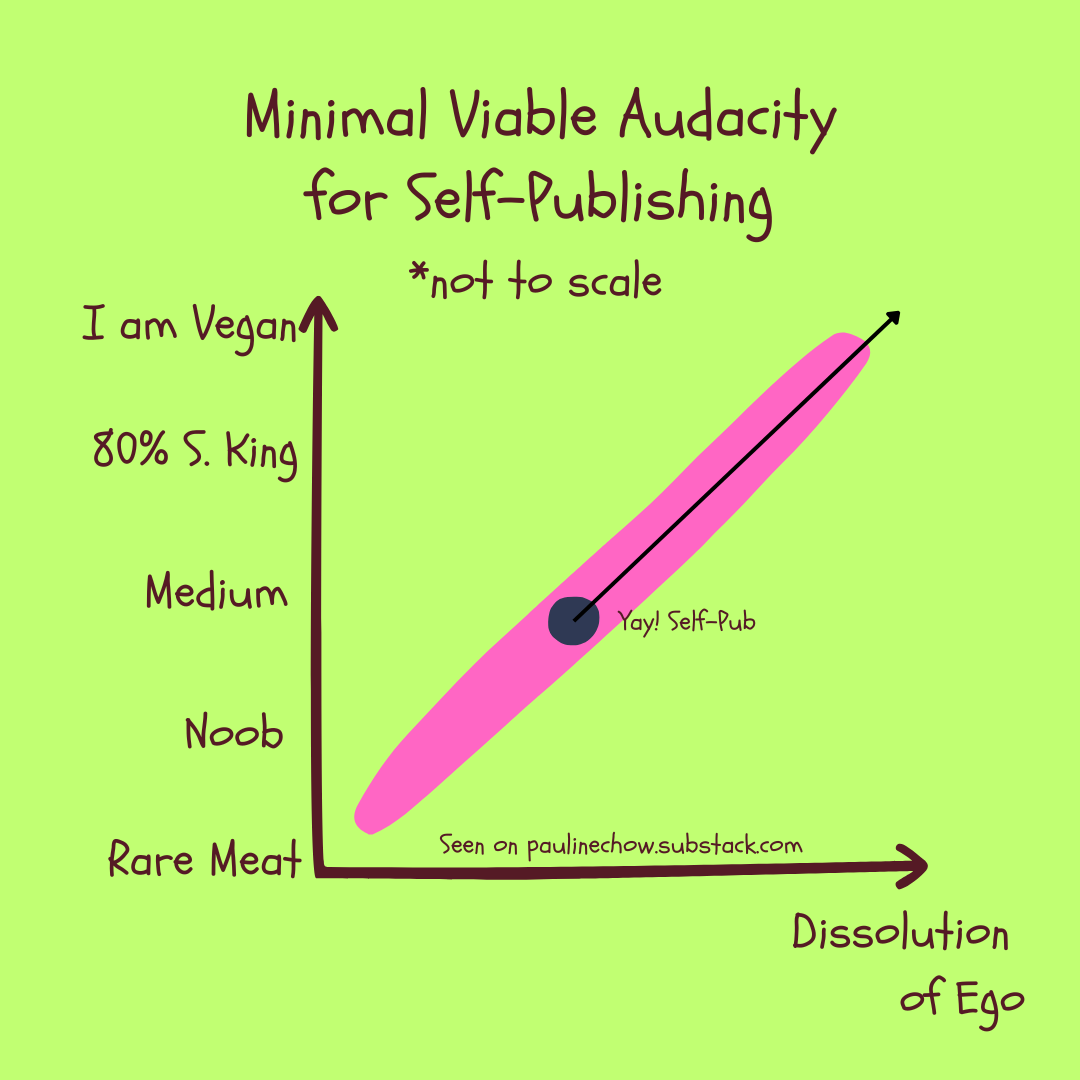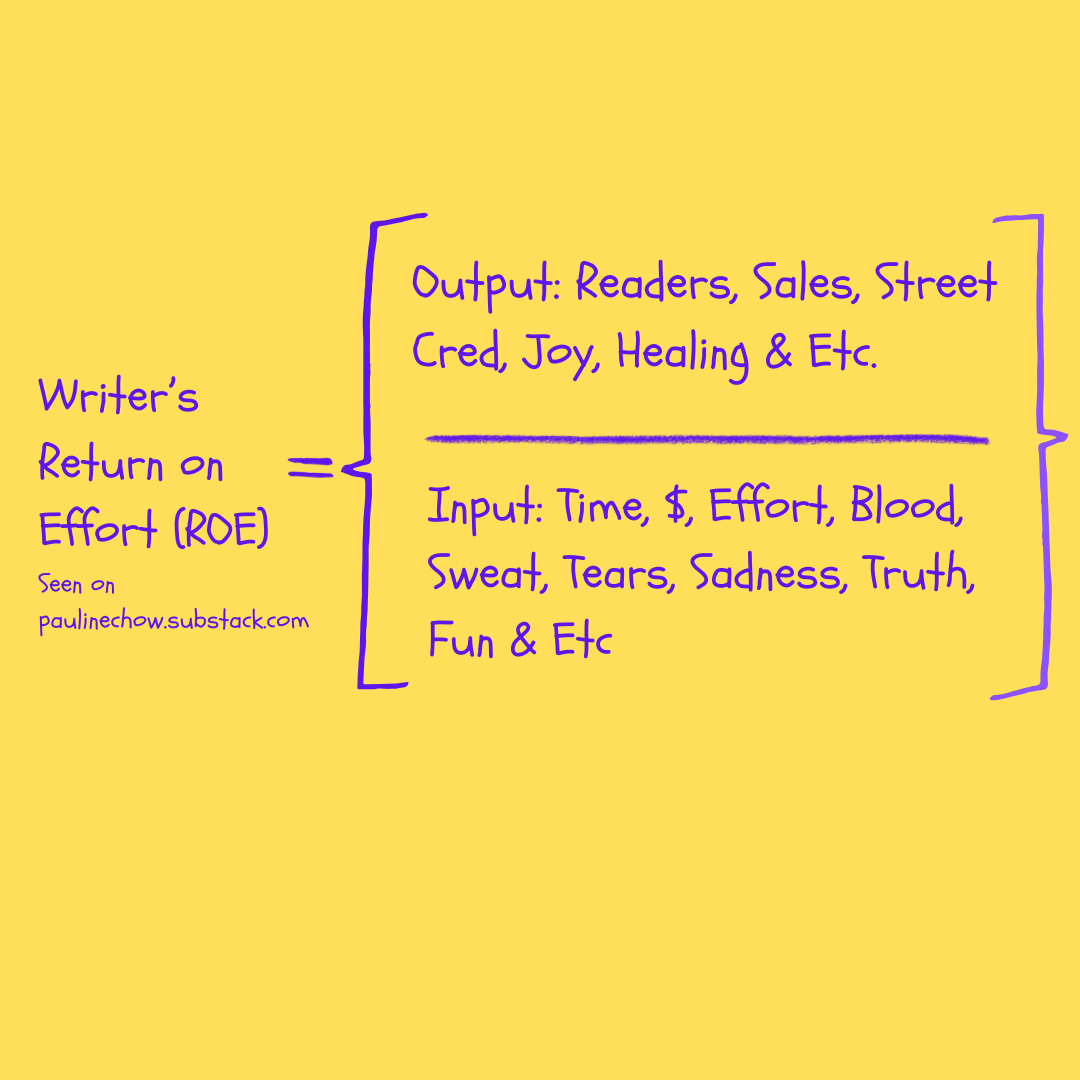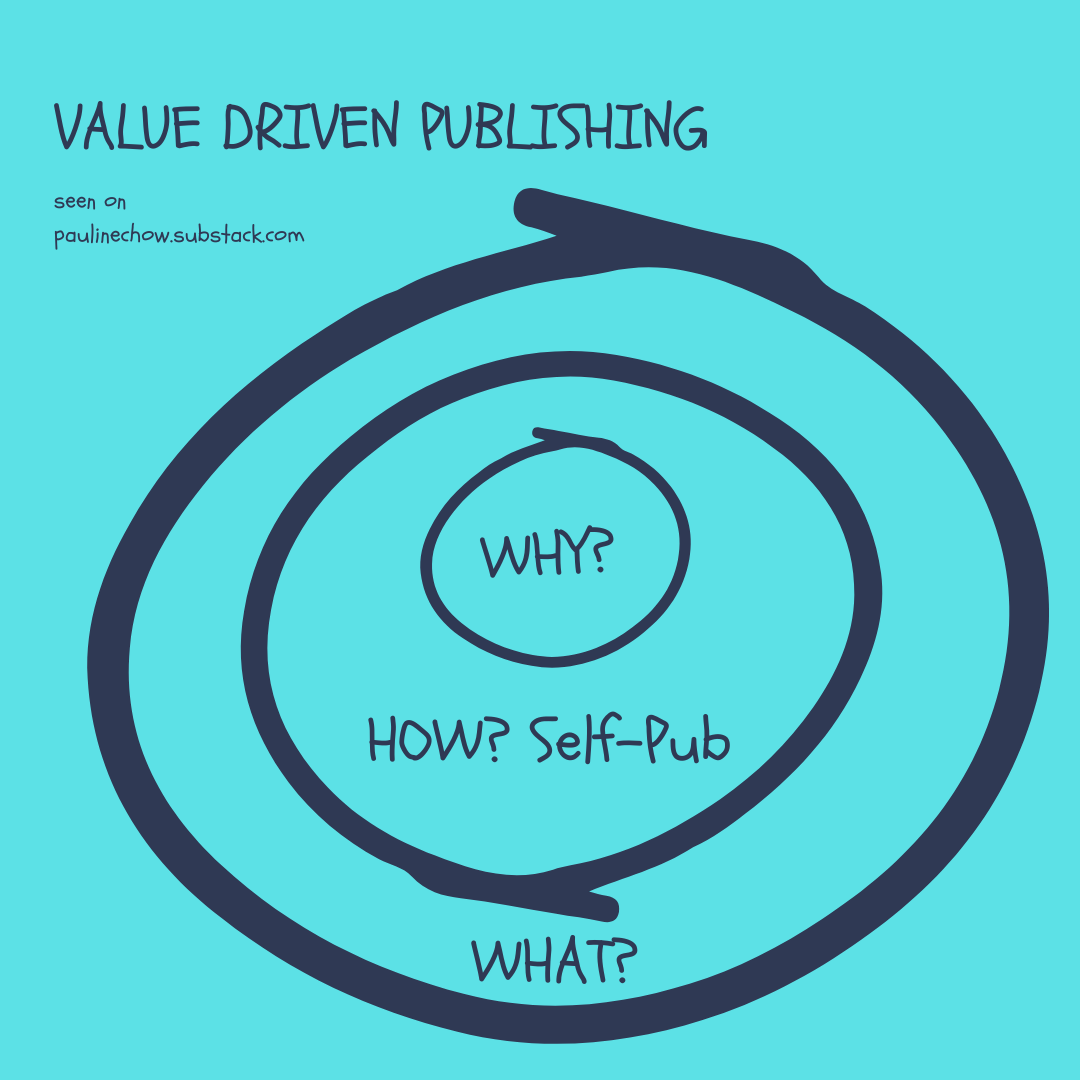My Minimal Viable Mindset (MVM) for Self-Publishing
Hoarding courage, audacity, and bravado for creative writing since 2019
In the business of storytelling, self-publishing is edgy, risky, and potentially unfulfilling. Fears I had to overcome for doing-it-yourself. After going down the path of finding an agent and hybrid publishing, I decided to self-publish Chasing Moonflowers in July 2025. Gettging to my Minimal Viable Mindset (MVM) comes directly from my fears - edginess tests my audacity, riskiness tickles my burn-out, and self-worth probes my values.
Great rewards are reaped through discomfort. Does this come from my less than healthy start-up mindset taking over? Novels aren’t minimal viable products (MVP) like phone apps or websites. A book is painstakingly beta read, edited, re-edited, copy edited, and proofread. I fear my mistake ridden mind will write “sex” instead of “sox,” and send my readers into a blind rage into GoodReads, StoryGraph, or to my mom’s Facebook profile. Don’t be fooled by my corporate jargon. I won’t be writing about leveraging large language models (LLMs) to publish twenty books in one year. Instead, I am reflecting on the milestones. How did I discover the Minimal Viable Mindset (MVM) for self-publishing my first novel?
Is Self-Publishing Edgy? Finding Minimal Viable Audacity (MVA)
I spent my professional career in technology, start-ups, and law, attempting to buck the system. As a legal aid attorney, my organization looked for landlords to bring a class or collective action against. In this case, one tenant’s cockroach and mice feces filled apartment is one nonprofit's attempt to scare slum lords. Large or small, the technology companies I joined dreamed of changing their industries — from fashion, e-commerce, blockchain games, or climate-based mutual funds. The audacity I carried into the courtroom, town halls, and coding repositories was the same that I pushed into writing: one person’s actions can change the world.
Unfortunately, I also spent my life honing corporate jargon. It’s not a language that I love, but perhaps I can reshape it for humor and inspiration. I will not allow this language go to waste. Let’s try.
On the road to self-publishing, Minimal Viable Audacity is a requirement. MVA is a core belief that your actions, words, and thoughts matter. The story you’re writing is good enough and should be shared widely. Audacity is both bold and rude, a quality not always valued by others. Not only does this attitude apply to self-publishing, but it also comes into play when submitting short stories, applying for jobs, choosing your future partner, and publishing this post with no spell check.
Audacity presents in multiple shades. In Fig 1, on the left or x-axis is the writer type. You can self-identify or replace the up-and-down ticks with time spent in writing (continuous variable), number of novels or short stories published (categorical variable), or quantity of coffee consumed in a day (cups or millileters?). I advise the ideal point for self-publishing at the dot; At the mid-point of the ego dissolution and when a writer feels “medium.” Resources for definitions and concepts touched on in this section:
A New Earth by Eckhart Tolle explores the concept of ego as the root of human suffering and emphasizes the importance of spiritual awakening to transcend it. Tolle discusses more than mindfulness. He discusses the collective pain body and higher state of consciousness, leading to personal and collective transformation. [ I prioritize linking to Bookstore.org.]
Bird by Bird: Some Instructions on Writing and Life by Anne Lamott is written with humor and heart. Writing and life don’t succomb to formulas, so get swept up in its beauty.
Craft in the Real World: Rethinking Fiction Writing and Workshopping by Matthew Salesses helped me reframe feedback and workshopping. Writing as an institution has biases too.
My “medium” rank as a writer arrive after my short stories was accepted at a handful of unpaid and paid magazines. I learned a lot from two years of submitted to magazines. I got comfortable with feedback, editing, process of rejection, considering the reader, and understood when story felt complete. While the truth is a story is never done, it can be complete/clear for readers. I finally got a taste of “success,” and I love it. My initial spritz of audacity was recycled again and again.
Is Self-Publishing Risky? A Writer’s Equation for Return-on-Effort (ROE)
Writers invest time, effort, blood, sweat, and tears into their words. These inputs don’t guarantee publication, readership, or even a quality output. Why do writers and artists continue producing work? I can’t answer the philosophical part.
A Writer’s Return on Effort (ROE) equation is a straight-forward stacking of outputs and inputs. It’s not rocket science, even though the fancy graphics make it look complicated. Are you, the writer, happier/lighter/less burdened after sharing your work? If non, re-evaluate the components of your methods, such as easing up on writing time and bloodletting.
Otherwise, putting into the process without an output severely decreases the return. Some authors query patiently for years and trunk their manuscripts after rejection. Starting in 2019, I rewrote a single novel five times, started three new ones, and wrote Chasing Moonflowers alongside a HWA mentor. While unpublished writing isn’t a loss per say, it doesn’t bode well for the equation. For deciding to self-publishing, I keep in mind the ROE equation. Writers needs readers. While this formula cannot guarantee readers, the core principle behind it is zero readers divided by any number is always equal zero.
Is Self-Publishing Unfulfilling? Value Driven Publishing (VDP)
Writer have the power to define their own fulfillment. At the end of the journey, the metrics may appear similar. What will make your efforts worth it at the end? Understanding the inner purpose of your writing will help decide if self-publishing is right for your brand, platform, and content. Self-publishing is a mechanism for your greater purpose. Why are do you write?
I will not reinvent the wheel on finding purpose. I have the utmost confidence that writers at every ego notch and defining themselves as any type has a “why” for writing. Leaving you with links and book recommendation feels right:
John Doerr: Why the Secret to Success is Setting the Right Goals? This Ted Talk presents a framework for business decision-making with Objectives and Key Results (OKRs), which was pivotal for me in different roles.
Joanne Penn’s nonfiction books for authors on marketing, craft, and productivity.
How to be an Authortunist by Angela Yuriko Smith outlines reasons to write. On her Authortunities Hub, the platform gamifies these purposes into quests including CRAFT, FORTUNE, CREDIBILITY, FORTUNE, and FAME.
With the “why,” figuring out if self-publishing is more straight-forward. I’ll drop ideas for your researching pleasure:
Craft = Creative Control
Fortune = Higher Royalties and Speed to Market
Credibility = Building Personal Brand
Popularity = Global Reach and Speed to Market
Pauline Chow writes speculative fiction to explore alternative histories and possible futures. Not your average data scientist she once sued slumlords and advocated for affordable housing as a legal aid attorney. She lives in the woods and is planning her next trip to a historical (and hopefully haunted) hotel. Her words are in Cosmic Horror Monthly, Apocalypse Confidential, Space and Time Magazine, and more. Chasing Moonflowers is publishing in July 2025.
Find her at www.paulinechowstories.com and https://bsky.app/profile/paulinechow.bsky.social.




